By Lt. Col. Harold E. Raugh, Jr., Ph.D., U.S. Army (Ret.)
Kill them, Lieutenant. Don’t take any prisoners,” exhorted the bedraggled engineer officer to the new replacements, “Don’t take any prisoners!”
Listening was U.S. Army Second Lieutenant A. Preston Price, newly arrived in the European Theater of Operations. He was in charge of that platoon of wide-eyed replacements. Within hours on that bleak day of December 23, 1944, Price and his fellow replacements were on their way to the “front” and assigned to units to help blunt the German onslaught in the Battle of the Bulge. Price was assigned to the 1st Infantry Division, the “Big Red One,” and this riveting account, The Last Kilometer: Marching to Victory in Europe with the Big Red One, 1944-1945 (Naval Institute Press, Annapolis, MD, 2002, 224 pp., illustrations, maps, index, $24.95 hardcover) chronicles his combat service from Belgium during the Bulge to V-E Day and the end of the war in Czechoslovakia.
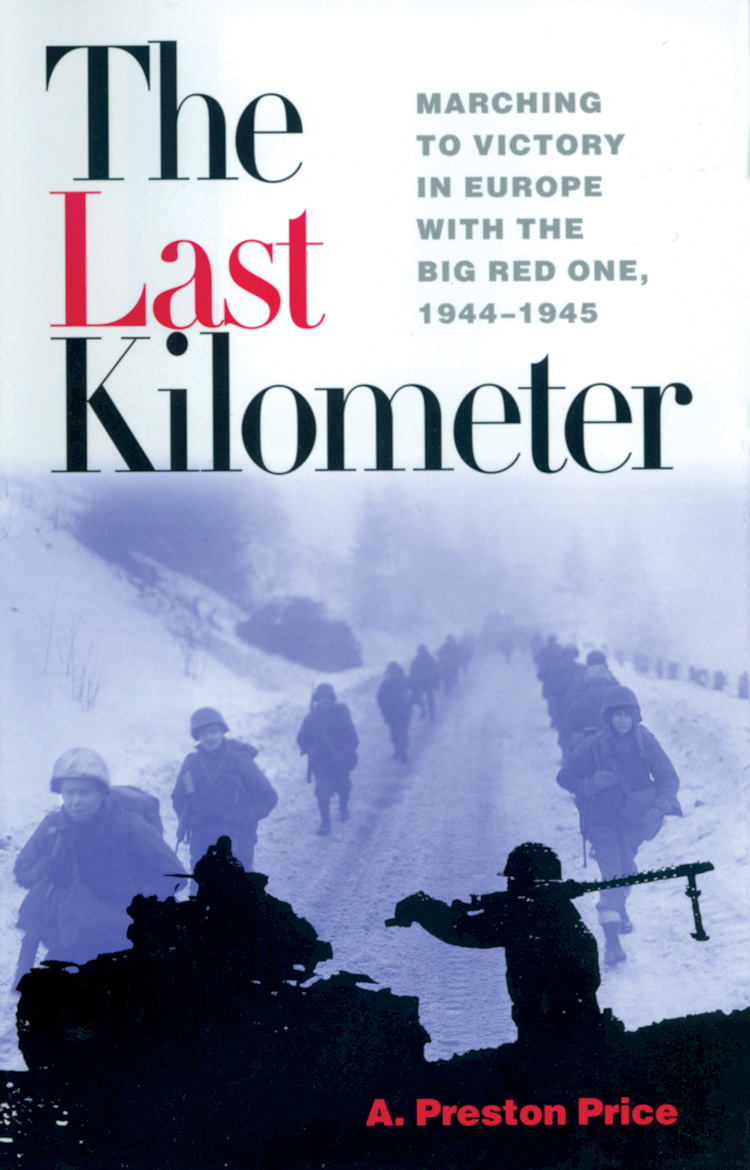 Price was immediately thrown into the maelstrom of combat as an 81mm mortar forward observer in the 3rd Battalion, 26th Infantry Regiment. After learning the procedures of observing and calling for fire in his sector near the Elsenborn Ridge, Belgium, Price settled into a routine where “the days blend into one long period of misery alternating with excitement and boredom.” He also participated in a number of dismounted infantry attacks, frequently plodding through deep snow while bracketed by exploding enemy artillery shells, finally piercing the dragon’s teeth of the Siegfried Line and entering Germany. At that point, near the end of January 1945, the 1st was relieved by the 99th Infantry Division and moved to a rest area in Belgium.
Price was immediately thrown into the maelstrom of combat as an 81mm mortar forward observer in the 3rd Battalion, 26th Infantry Regiment. After learning the procedures of observing and calling for fire in his sector near the Elsenborn Ridge, Belgium, Price settled into a routine where “the days blend into one long period of misery alternating with excitement and boredom.” He also participated in a number of dismounted infantry attacks, frequently plodding through deep snow while bracketed by exploding enemy artillery shells, finally piercing the dragon’s teeth of the Siegfried Line and entering Germany. At that point, near the end of January 1945, the 1st was relieved by the 99th Infantry Division and moved to a rest area in Belgium.
Before departing the rest area, Price had an unusual experience while walking one night: “As I come closer I can make out a man on the ground—a German. He holds both arms out toward me above his body. I am shocked and draw back. Now I see on each side of him other Germans. As far as I can see in all directions there are others. Dead Germans, half-uncovered by the melting snows, in every conceivable position. There are dozens of bodies, all laid out in neat rows. I shiver, more from the eerie sight than from the cold….”
It seems Price had stumbled upon a German casualty collection point, revealed by the thawing snow on the moonlit night. This episode also shows the author’s writing and descriptive abilities, as well as his curious style of writing in the present tense.
The reader rejoins Price on the march to and across the Roer and Rhine Rivers, engaging the enemy almost daily and receiving incessant artillery barrages from the desperate Germans. Battles continued, as Price’s unit fought in the Harz Mountains, then advanced into Czechoslovakia, as the war ended.
Price’s compelling account of his wartime service in the 1st Infantry Division is told realistically, and does not glorify war. In addition to chronicling his own maturing and professional development, this book is an unvarnished saga—occasionally heroic, frequently mundane, and always grim—of the trials, tribulations, and triumphs of the combat infantryman.
Recent and Recommended
A Ranger Born: A Memoir of Combat and Valor from Korea to Vietnam, by Robert W. Black, Ballentine Books, New York, 2002, 308 pp., illustrations, glossary, $24.95 softcover.
“Once a Ranger, always a Ranger,” is the continuous thread running through this autobiographical tapestry of retired U.S. Army Colonel Robert W. Black. This interesting book focuses on Black’s combat tours in Korea and in Vietnam. He first enlisted in the Army in 1947 and later attended the mentally demanding and physically challenging Airborne and Ranger courses. As a soldier in the 8th Ranger Company, he served in Korea in 1951-1952, participating in numerous platoon-sized “combat patrols looking for trouble”—and frequently found it in the shape of aggressive Chinese soldiers. After his Korean tour of duty, Black returned to the United States and was discharged. Unhappy with civilian life, Black returned to the Army and was commissioned an officer. As a major, Black served in 1967-1968 as a district senior adviser with the Military Assistance Command, Vietnam. He narrates with keen insight his struggles against both the Viet Cong and corrupt South Vietnamese officials. The infamous Tet Offensive took place while Black was in Vietnam, and he records a marked deterioration of U.S. soldier discipline, morale, and professionalism in its aftermath.
Black’s candid and descriptive memoir of small-unit combat in Korea and Vietnam, the heartfelt recollections of a proud Airborne Ranger, deserves a large readership.
In Brief
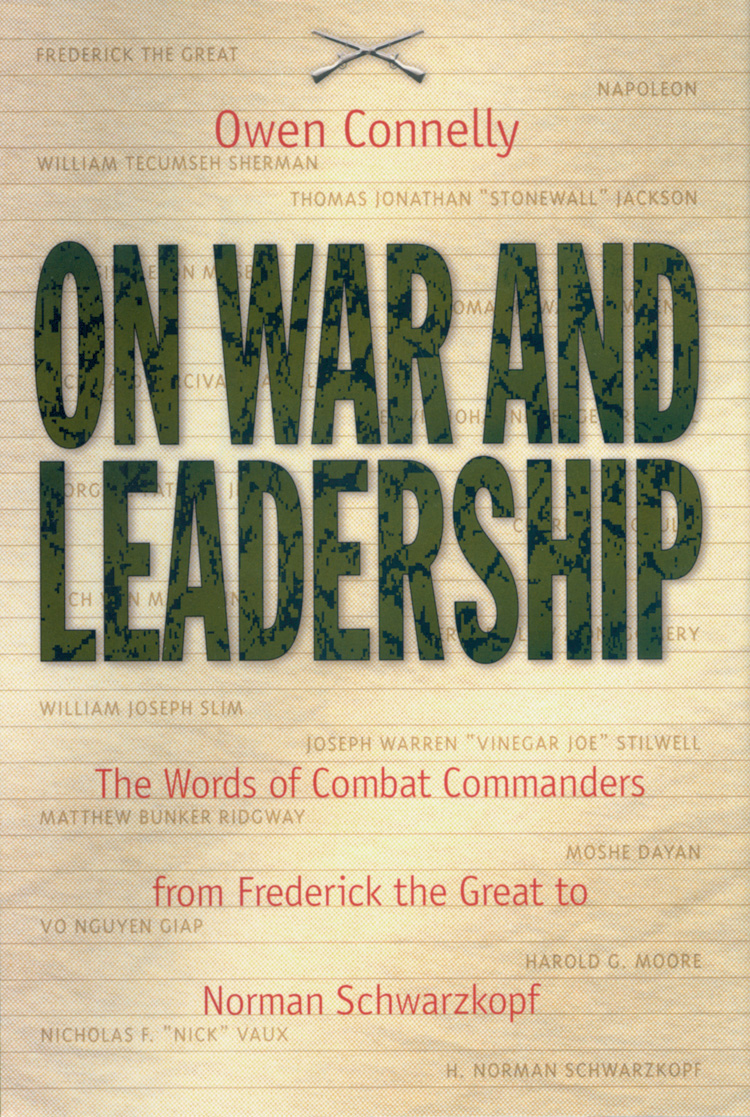 On War and Leadership: The Words of Combat Commanders from Frederick the Great to Norman Schwarzkopf, by Owen Connelly, Princeton University Press, Princeton, 2002, 347 pp., notes, bibliography, index, $29.95.
On War and Leadership: The Words of Combat Commanders from Frederick the Great to Norman Schwarzkopf, by Owen Connelly, Princeton University Press, Princeton, 2002, 347 pp., notes, bibliography, index, $29.95.
Korean War veteran and historian Owen Connelly highlights the leadership philosophies of 20 senior combat commanders, in their own words, from the major wars of the past 250 years.
Most of these commanders, such as Frederick the Great and Napoleon, are well known. Others include opponents from the same conflict: from the American Civil War, Sherman and Jackson; from World War II, Rommel and Patton; and from the Vietnam War, Giap and Moore, among others. Some of the inclusions are frequently overlooked and underrated generals, such as the British Wavell and Slim, but whose reflections on military leadership are among the most incisive, inspiring, and combat-tested on record. The result is a superb and thought-provoking primer from masters of the art of command on the timeless elements of leadership that can be followed to help overcome any adversity.
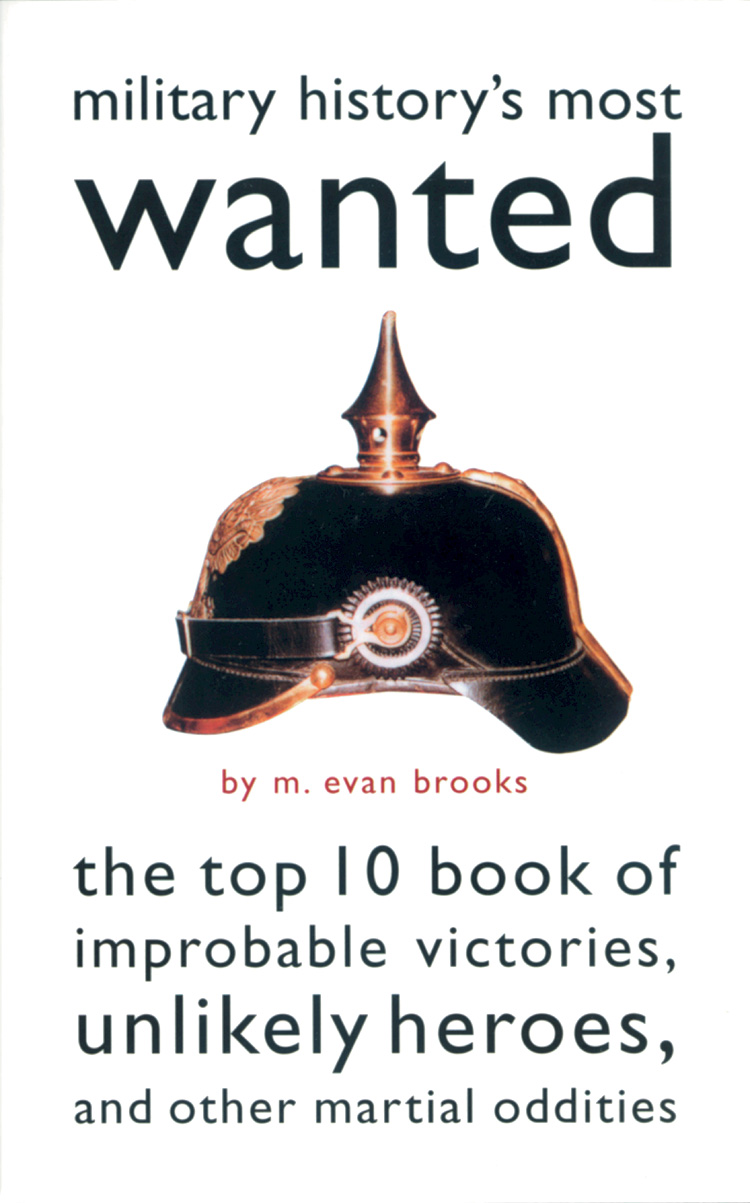 Military History’s Most Wanted: The Top 10 Book of Improbable Victories, Unlikely Heroes, and Other Martial Oddities, by M. Evans Brooks, Brassey’s, Washington, DC, 2002, 386 pp., illustrations, bibliography, index, $12.95.
Military History’s Most Wanted: The Top 10 Book of Improbable Victories, Unlikely Heroes, and Other Martial Oddities, by M. Evans Brooks, Brassey’s, Washington, DC, 2002, 386 pp., illustrations, bibliography, index, $12.95.
Was Napoleon Bonaparte the premier “great captain” of history and British Admiral Lord Horatio Nelson the greatest admiral of history? Was German Field Marshal Erwin Rommel the most overrated commander and British General Sir Richard N. O’Connor the most underrated? These are the assertions of M. Evans Brooks in Military History’s Most Wanted, a compilation of 70 descriptive “top 10” lists, covering 700 commanders, battles, war movies, and many other interesting military topics, from the prominent to the obscure, and the controversial to the obvious. The author justifies his rankings with generally accurate supporting information and includes a bibliography for reference and further reading. This worthwhile book is educational and entertaining, and the author’s choices in the various military categories will spark a lively historical debate.
African American Recipients of the Medal of Honor: A Biographical Dictionary, Civil War through Vietnam War, by Charles W. Hanna, McFarland, Jefferson, NC, 2002, 199 pp., illustrations, appendix, bibliography, index, $45.00.
On the battlefield, bullets, bayonets, and bombs do not discriminate by age, rank, or race. Similarly, no one group holds a monopoly on courage and intrepidity in combat. Of the 3,457 men and one woman who have earned the Medal of Honor since its institution in 1861, 88 have been African Americans. This interesting book consists of biographical sketches of these American heroes, occasionally illustrated and generally cobbled around their Medal of Honor citations. It is organized into eight chapters corresponding to conflicts in which awards were earned, from the Civil War to the Vietnam War. By highlighting the heroism of the 88 African American Medal of Honor awardees, this slim (and relatively expensive) volume pays tribute to all Americans who have received our nation’s highest military award for valor.
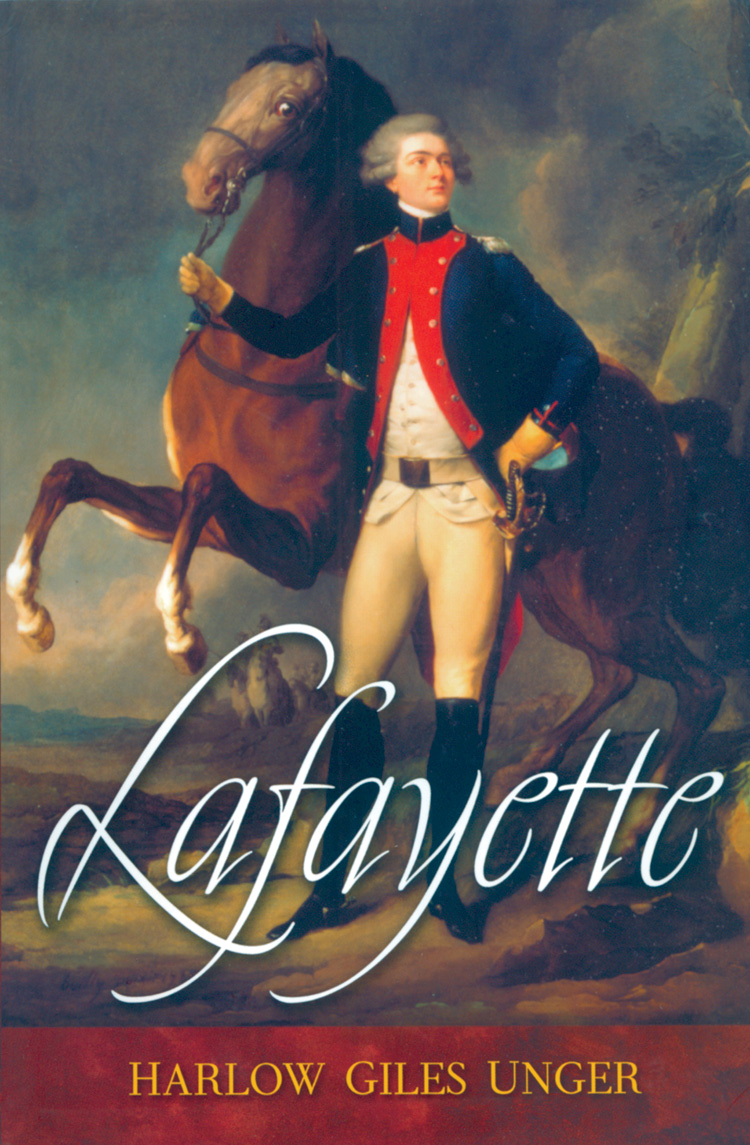 Lafayette, by Harlow Giles Unger, Wiley, New York, 2002, 452 pp., chronology, illustrations, maps, notes, bibliography, index, $30.00.
Lafayette, by Harlow Giles Unger, Wiley, New York, 2002, 452 pp., chronology, illustrations, maps, notes, bibliography, index, $30.00.
The 19-year-old Marquis de Lafayette, one of the wealthiest aristocrats in France, gave up a life of luxury in 1776 when he came to America to fight for the colonies’ freedom and liberty. His personal leadership and bravery on the battlefield were undisputed. But his greatest contribution was convincing France to send a huge naval armada and army to America that helped defeat the British and tipped the scales in favor of independence. Lafayette tried to introduce American democratic values to his homeland, and these “radical” ideas helped ignite the French Revolution. He was imprisoned for his liberal views but refused to compromise his ideals and principles.
This well-researched and superbly illustrated biography of Lafayette is inspiring, interesting, and informative. It helps restore Lafayette to his rightful position as one of the most distinguished, visionary, and revered figures in American and European history.
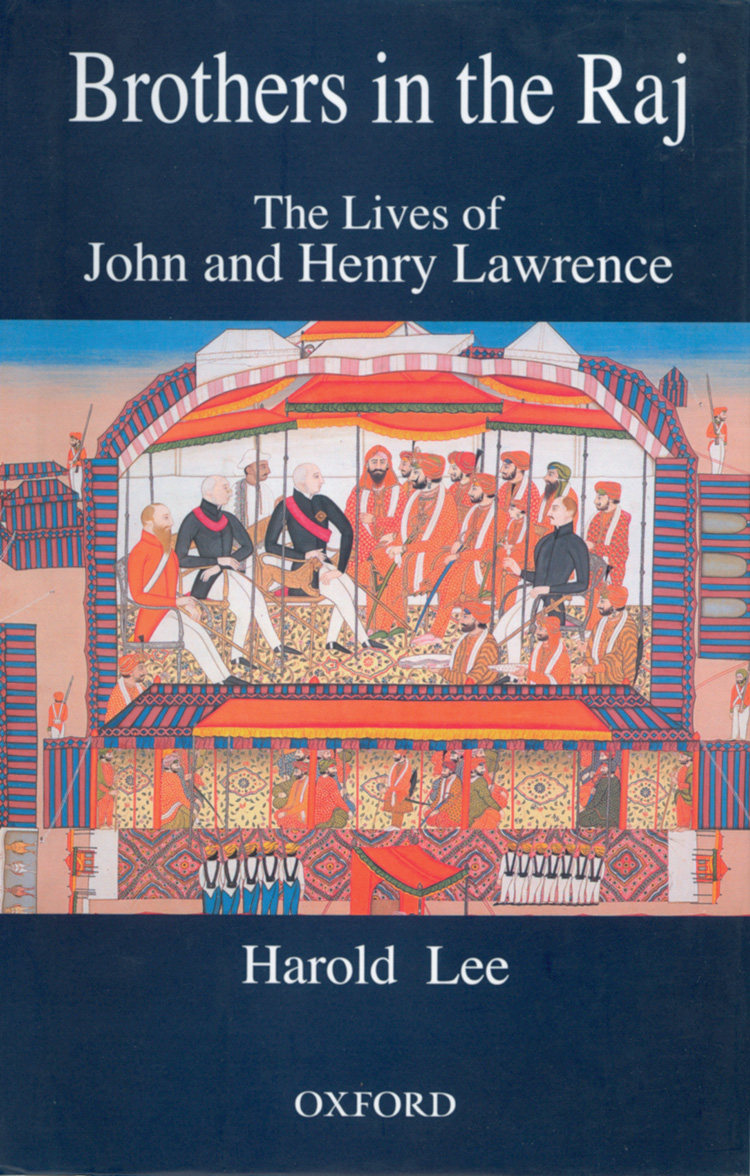 Brothers in the Raj: The Lives of John and Henry Lawrence, by Harold Lee, Oxford University Press, Oxford, 2002, 437 pp., illustrations, glossary, abbreviations, bibliography, index, $24.95.
Brothers in the Raj: The Lives of John and Henry Lawrence, by Harold Lee, Oxford University Press, Oxford, 2002, 437 pp., illustrations, glossary, abbreviations, bibliography, index, $24.95.
In the 19th century, India was considered the “jewel in the crown” of the far-flung British Empire. John and Henry Lawrence were two British brothers who devoted their lives to governing India. Henry (1806-1857), soldier-turned-political officer, and John (1811-1879), civil servant, had both already served in India for decades when the Punjab (today’s northern Pakistan) was annexed by the British in 1849 after the Second Sikh War. Both brothers served in the Punjab administration until philosophical differences resulted in Henry’s reassignment. Serving in Lucknow as a brigadier general at the outbreak of the Indian Mutiny in 1857, Henry was killed leading the defense of the British Residency against attacking Indian insurgents. John’s career culminated as viceroy, the highest government position of India in the 1860s.
This impeccably researched and skillfully written dual biography chronicles and assesses the lives and contributions of the Lawrences to the Raj in India, ably placing them within the context of the British colonial experience. Moreover, the personalities and achievements of the Lawrences serve as a prism through which the reader can gain insight into the causes of and conduct of operations during the Indian Mutiny, the bloody “Great Revolt,” of 1857-1859.
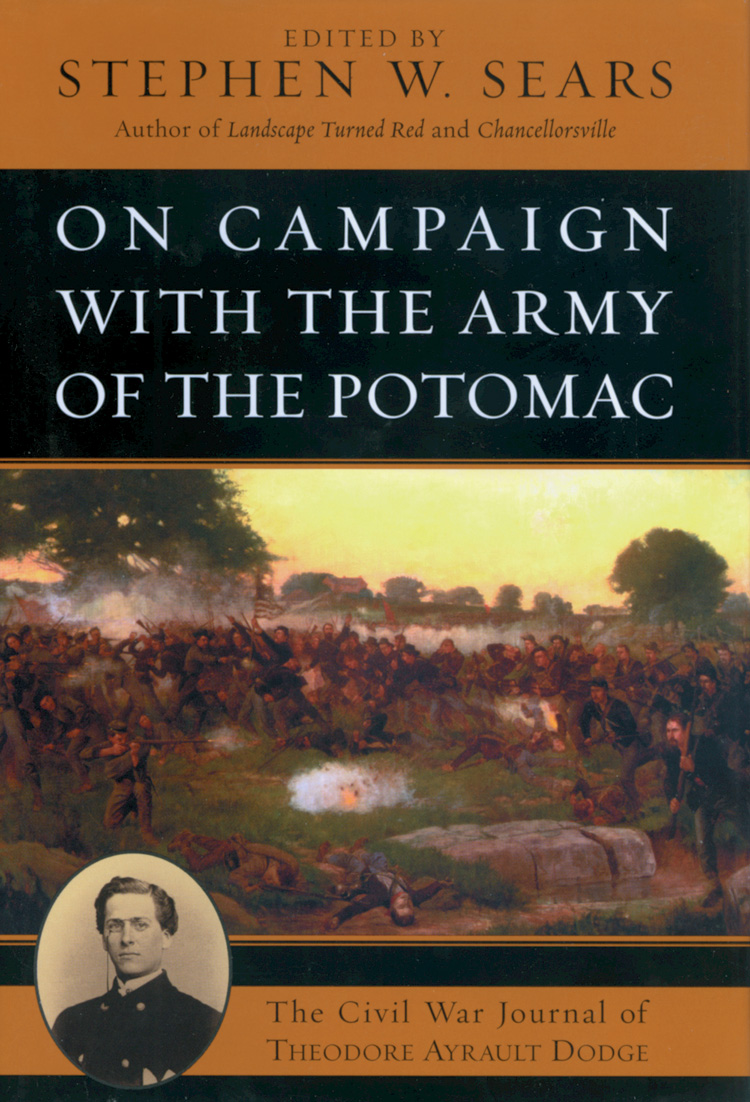 On Campaign with the Army of the Potomac: The Civil War Journal of Theodore Ayrault Dodge, edited by Stephen W. Sears, Cooper Square Press, New York, 2001, 341 pp., illustrations, appendix, index, $28.95 hardcover.
On Campaign with the Army of the Potomac: The Civil War Journal of Theodore Ayrault Dodge, edited by Stephen W. Sears, Cooper Square Press, New York, 2001, 341 pp., illustrations, appendix, index, $28.95 hardcover.
Theodore A. Dodge is best remembered as a meticulous military biographer of the “Great Captains” and historian of the late 19th century. These achievements, however, have overshadowed his earlier life and Civil War service. As a young infantry officer in the Army of the Potomac, Dodge saw extensive combat—in the Seven Days’ Battle, Second Bull Run, and Chancellorsville—until he was severely wounded at Gettysburg. Throughout his active service, Dodge diligently recorded in vivid detail his experiences and observations of his soldiers and superiors—in camp, on the march, and in battle. Well edited, this hitherto unpublished memoir opens a window and provides a candid and realistic glimpse into soldiering, life, and death during the American Civil War.
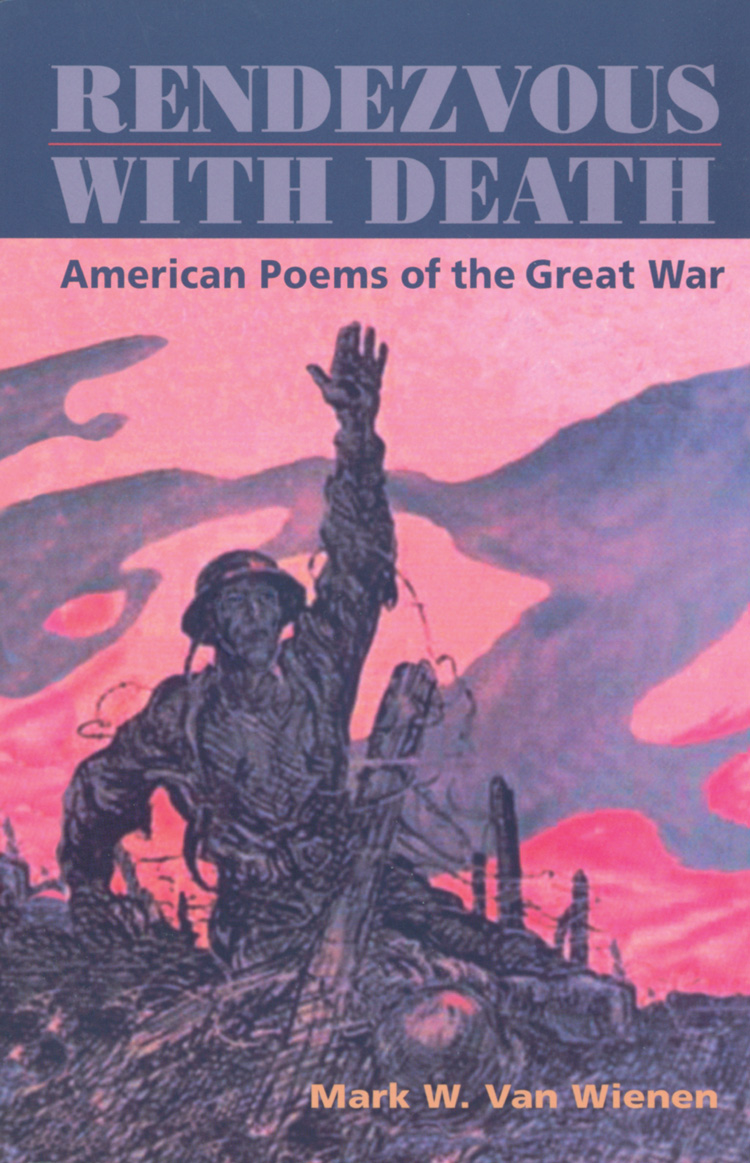 Rendezvous with Death: American Poems of the Great War, edited by Mark W. Van Wienen, University of Illinois Press, Champaign, 2002, 363 pp., illustrations, notes, works cited, index, $19.95 softcover.
Rendezvous with Death: American Poems of the Great War, edited by Mark W. Van Wienen, University of Illinois Press, Champaign, 2002, 363 pp., illustrations, notes, works cited, index, $19.95 softcover.
“I Have a Rendezvous with Death,” written by American Alan Seeger while serving in the French Foreign Legion on the Western Front, is one of the most poignant and prophetic poems of World War I. It is one of some 150 Great War poems in this interesting anthology that reveals the candid, hopeful, realistic, despondent, and whimsical voices of American military and frequently liberal civilian, poets. Placed ably within their social and historical context, these poems range from Carl Sandburg’s “Ready to Kill” and Charles Ashleigh’s “The Anti-Militarist,” to John McRae’s “In Flanders Fields” and “Ode to Tonsilitis,” by Wallace Irwin. These poems were written not only as art and entertainment but also as a social commentary and propaganda opposing or supporting American intervention in the European war. This poetry collection provides a poignant glimpse into the hearts and minds of World War I American poets, patriots, and protestors alike. Seeger, leading an attack on July 4, 1916, did not fail his “rendezvous with Death.”
Ordered to Die: A History of the Ottoman Army in the First World War, by Edward J. Erickson, Greenwood Press, Westport, CT, 2001, 265 pp., illustrations, maps, appendices, notes, bibliography, index, $62.50 hardcover.
Turkish participation in World War I is not well known mainly because the history of that conflict has been dominated by English-language and Anglocentric, Western Front-oriented sources and studies. This oversight has been ably corrected by Edward J. Erickson, a retired U.S. Army lieutenant colonel and Turkish linguist.
The author mined Turkish military and government archives and skillfully synthesized many previously unpublished documents to chronicle the participation and effectiveness of Turkish forces in the Gallipoli, Caucasian, Mesopotamian, and Palestinian campaigns. All of these operations are placed superbly within the context of Turkey’s political, economic, and strategic policies and realities. This excellent monograph dispels many myths and assesses the overall Ottoman war effort from the “Turkish side of the hill.” Comprehensive and balanced, Ordered to Die is likely to remain the definitive study of this topic.
In Search of the Better ’Ole: A Biography of Captain Bruce Bairnsfather, by Tonie and Valmai Holt, Leo Cooper, Barnsley, S. Yorks., UK, 2001, 288 pp., illustrations, appendix, index, $36.95 hardcover.
Walrus-mustachioed cartoon character “Old Bill,” the creation of the imagination and pen of British Army Captain Bruce Bairnsfather, came to personify the frontline British soldier of World War I. Irreverent and amusing, yet the model of fortitude, integrity, and optimism, “Old Bill” entered the homes and hearts of civilians on the Home Front while at the same time raising the spirits and morale of his “comrades” in the trenches on the Western Front. This interesting book—named In Search of the Better ’Ole after one of Bairnsfather’s first cartoons, considered by the authors to be “the most famous cartoon ever”—is a biography of the talented Bairnsfather.
His early life, months in the trenches as an infantry officer (which included the 1914 “Christmas truce”), and the genesis and evolution of his cartoons, are chronicled in rich detail, frequently using Bairnsfather’s own correspondence and the recollections of those who knew him. The volume is also profusely illustrated with Bairnsfather’s artwork and numerous photographs. Bairnsfather and “Old Bill” both survived the Great War, setting a precedent for Bill Mauldin and his foot-slogging “Willie and Joe” cartoon characters of World War II. This impressive book also deserves praise in highlighting the contributions and perpetuating the legacy of Bairnsfather and his creation “Old Bill.”
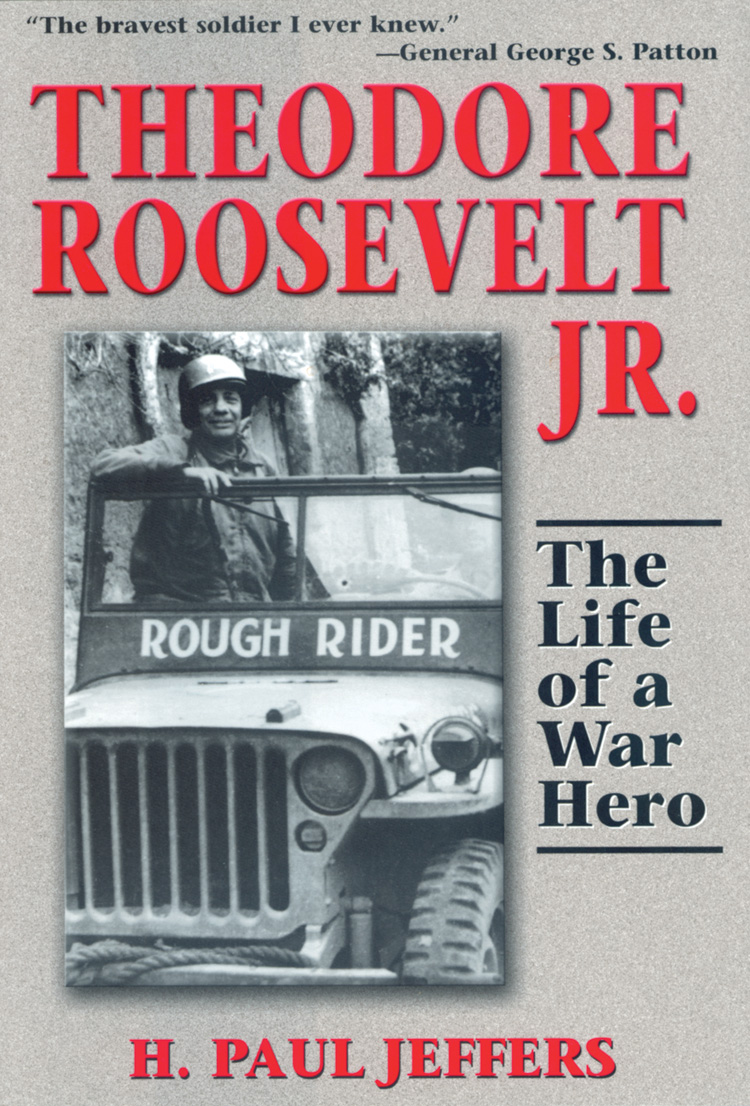 Theodore Roosevelt, Jr.: The Life of a War Hero, by H. Paul Jeffers, Presidio, Novato, CA: 2002, 304 pp., illustrations, maps, selected bibliography, index, $27.95.
Theodore Roosevelt, Jr.: The Life of a War Hero, by H. Paul Jeffers, Presidio, Novato, CA: 2002, 304 pp., illustrations, maps, selected bibliography, index, $27.95.
Brigadier General Theodore Roosevelt, Jr., U.S. Army Reserve, reportedly the youngest regimental commander in World War I and the only general officer to land with the first wave of troops at Utah Beach on D-day, lived in the shadow of his famous and flamboyant father. H. Paul Jeffers has written with dramatic flair and occasional hyperbole—and not a single footnote—the first biography of the younger Roosevelt and his lifelong quest to live up to his former Rough Rider and president father’s expectations. The result is a rich chronicle of a full, albeit privileged, life capped with significant achievements. Fifty-six-year-old Ted Roosevelt, Jr., died of heart failure on July 11, 1944, and was posthumously awarded the Medal of Honor for his D-day heroism and leadership—an award that had eluded his father during his lifetime.
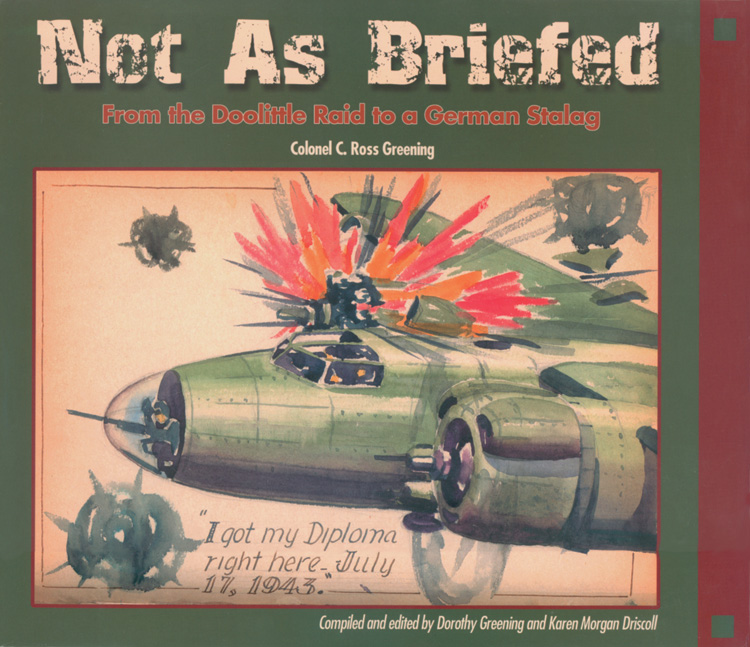 Not as Briefed: From the Doolittle Raid to a German Stalag, by C. Ross Greening, Washington State University Press, Pullman, 2001, 265 pp., illustrations, maps, appendix, sources, index, $42.00 hardcover.
Not as Briefed: From the Doolittle Raid to a German Stalag, by C. Ross Greening, Washington State University Press, Pullman, 2001, 265 pp., illustrations, maps, appendix, sources, index, $42.00 hardcover.
“I had chills running up and down my spine from excitement,” wrote Captain (later Colonel) C. Ross Greening as he flew his B-25 bomber off the flight deck of the USS Hornet on April 18, 1942, en route to Japan. Bombing Tokyo on the Doolittle Raid was not Greening’s last adventure in World War II; he was later shot down over Italy in July 1943. Captured and held in an Italian POW camp for almost three months, Greening escaped. He then spent some six months living with Italian families and in caves evading the enemy until recaptured by the Germans. He spent the rest of the war in a German stalag. Greening was also an excellent artist, and his crisp, enthralling memoir of a unique war experience is illustrated with scores of his own sketches and fascinating full-color paintings. As a result, Not as Briefed stands head and shoulders above the recent deluge of published World War II accounts.
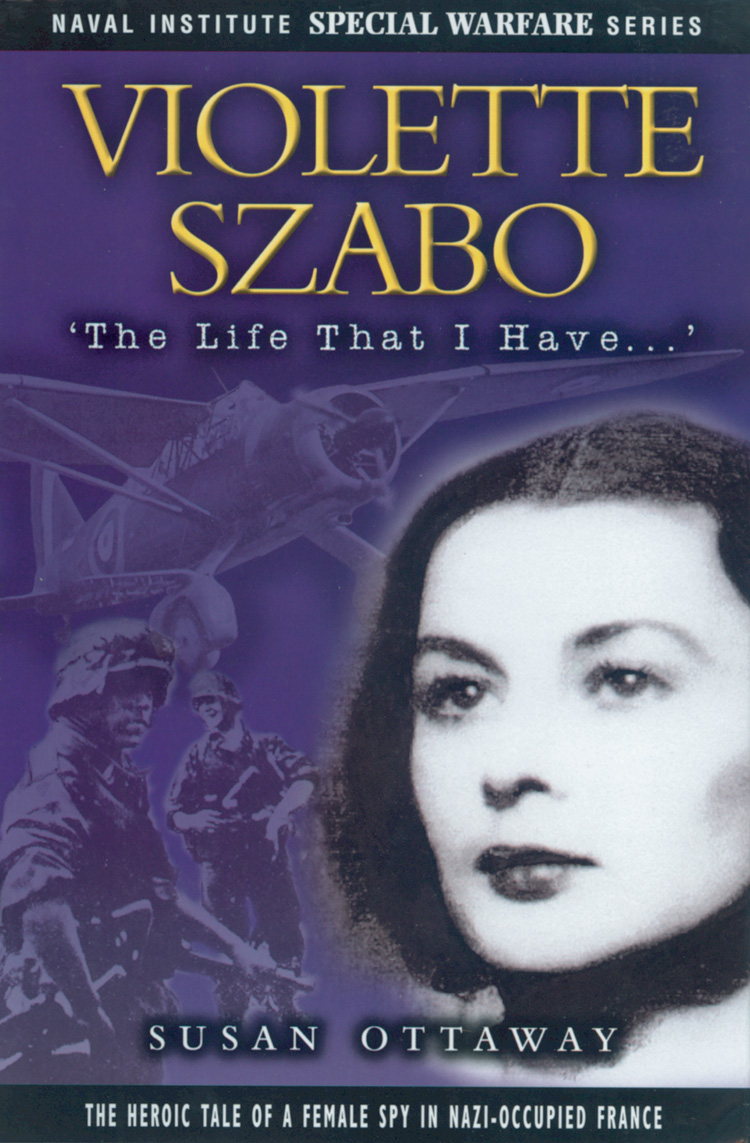 Violette Szabo: “The Life That I Have …” by Susan Ottaway, Special Warfare Series, Naval Institute Press, Annapolis, MD, 2002, 208 pp., illustrations, appendices, bibliography, index, $32.95.
Violette Szabo: “The Life That I Have …” by Susan Ottaway, Special Warfare Series, Naval Institute Press, Annapolis, MD, 2002, 208 pp., illustrations, appendices, bibliography, index, $32.95.
Violette Szabo was a courageous British heroine of World War II. Apparently motivated by patriotism and an ardent desire to avenge her French Foreign legionnaire husband’s death at El Alamein, the 22-year-old Szabo joined the Special Operations Executive (SOE) in 1943. After a mediocre performance in training, Szabo parachuted into enemy-held France on two occasions to work with the French Resistance. She was captured by the Germans after a fierce firefight in June 1944, only a few days into her second mission. After months of terrible suffering, Szabo was executed at Ravensbruck Concentration Camp in early 1945, one of 13 female SOE agents executed by the Germans.
Szabo’s contributions to and sacrifices for the war effort were recognized by the well-deserved award of the coveted George Cross. Reportedly based upon “recently discovered and previously unpublished papers,” this book contains no footnotes and only a short bibliography, and does not seem to reflect “extensive research.” While Szabo’s story is inspiring, this volume provides little new substantive information on Szabo or her experiences.
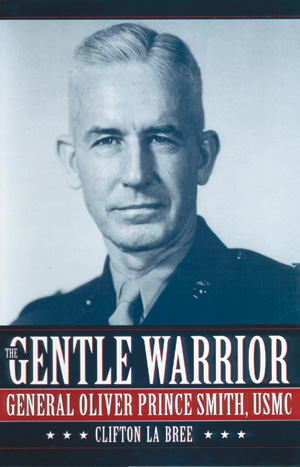 The Gentle Warrior: General Oliver Prince Smith, USMC, by Clifton La Bree, Kent State University Press, Kent, Ohio, 2001, 268 pp., illustrations, maps, appendices, notes, bibliography, index, $32.00 hardcover.
The Gentle Warrior: General Oliver Prince Smith, USMC, by Clifton La Bree, Kent State University Press, Kent, Ohio, 2001, 268 pp., illustrations, maps, appendices, notes, bibliography, index, $32.00 hardcover.
“Retreat hell, we’re just attacking in a different direction,” was the rallying cry attributed by the press to then-Maj. Gen. O.P. Smith, commanding general of the 1st Marine Division at the ferocious Chosin Reservoir fighting in Korea in December 1950. Smith’s dynamic and determined leadership was largely responsible for extricating Marine and Army forces from the Chinese onslaught. This book is a biography of Smith, who was born in 1893 and commissioned a second lieutenant in the Marine Corps in 1917. He missed seeing combat in World War I and his interwar assignments were generally routine. During World War II, Smith participated in combat operations on New Britain and Peleliu in 1944 and Okinawa in 1945. His “finest hour” came as commanding general of the 1st Marine Division during the Korean War. His division spearheaded the Inchon landing and led operations to recapture Seoul in September 1950, all in advance of the heroic actions at the Chosin Reservoir. Smith retired as a general in 1955 and died in 1977.
This volume at times seems to be little more than a series of long block quotes and other information from Smith’s own voluminous papers and diaries, official histories, and uncorroborated oral histories, cobbled together without much analysis. General O.P. Smith was an intelligent and professional Marine Corps leader, the consummate commander, and deserves an authoritative biography. Unfortunately, The Gentle Warrior is not worthy of its subject.
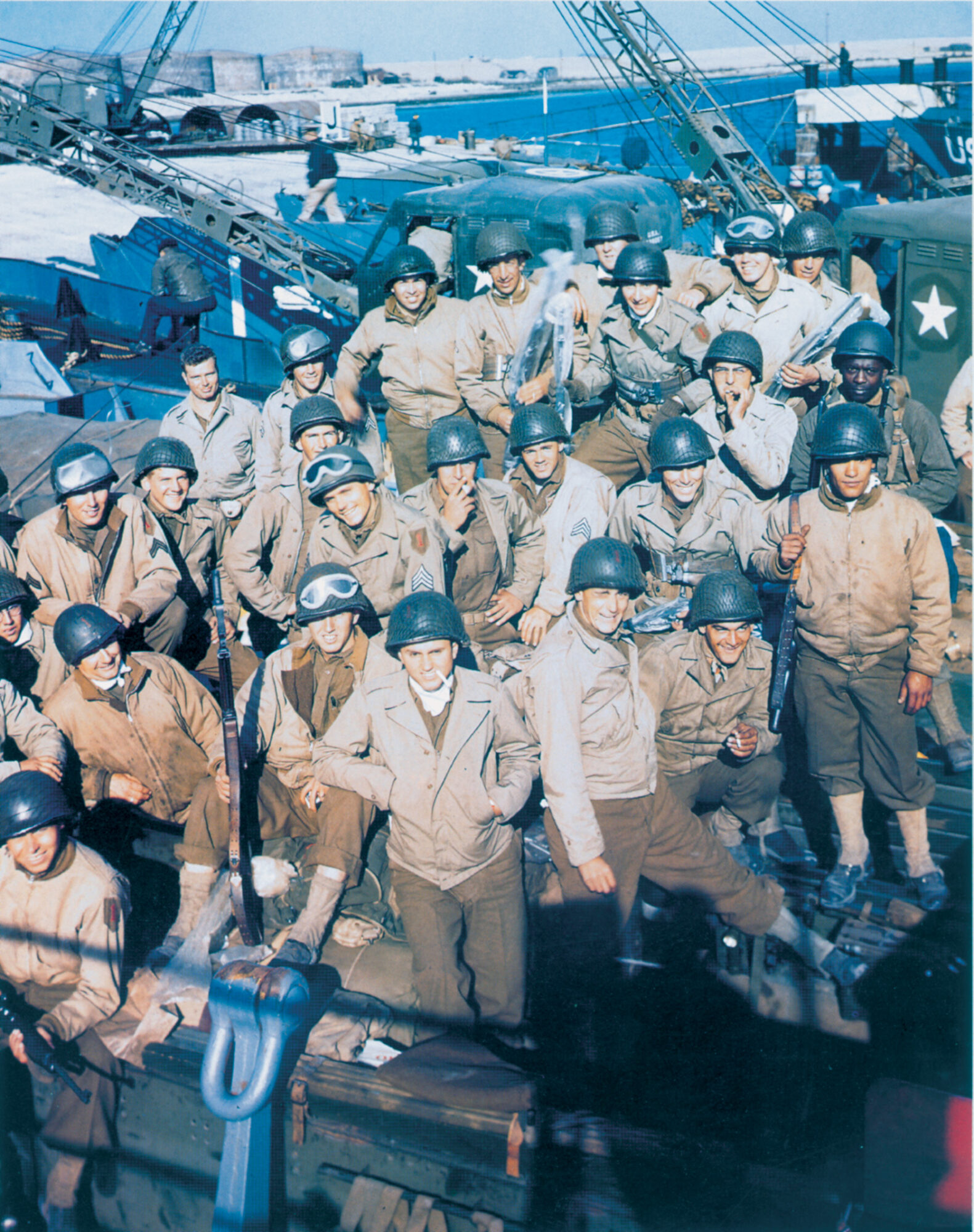
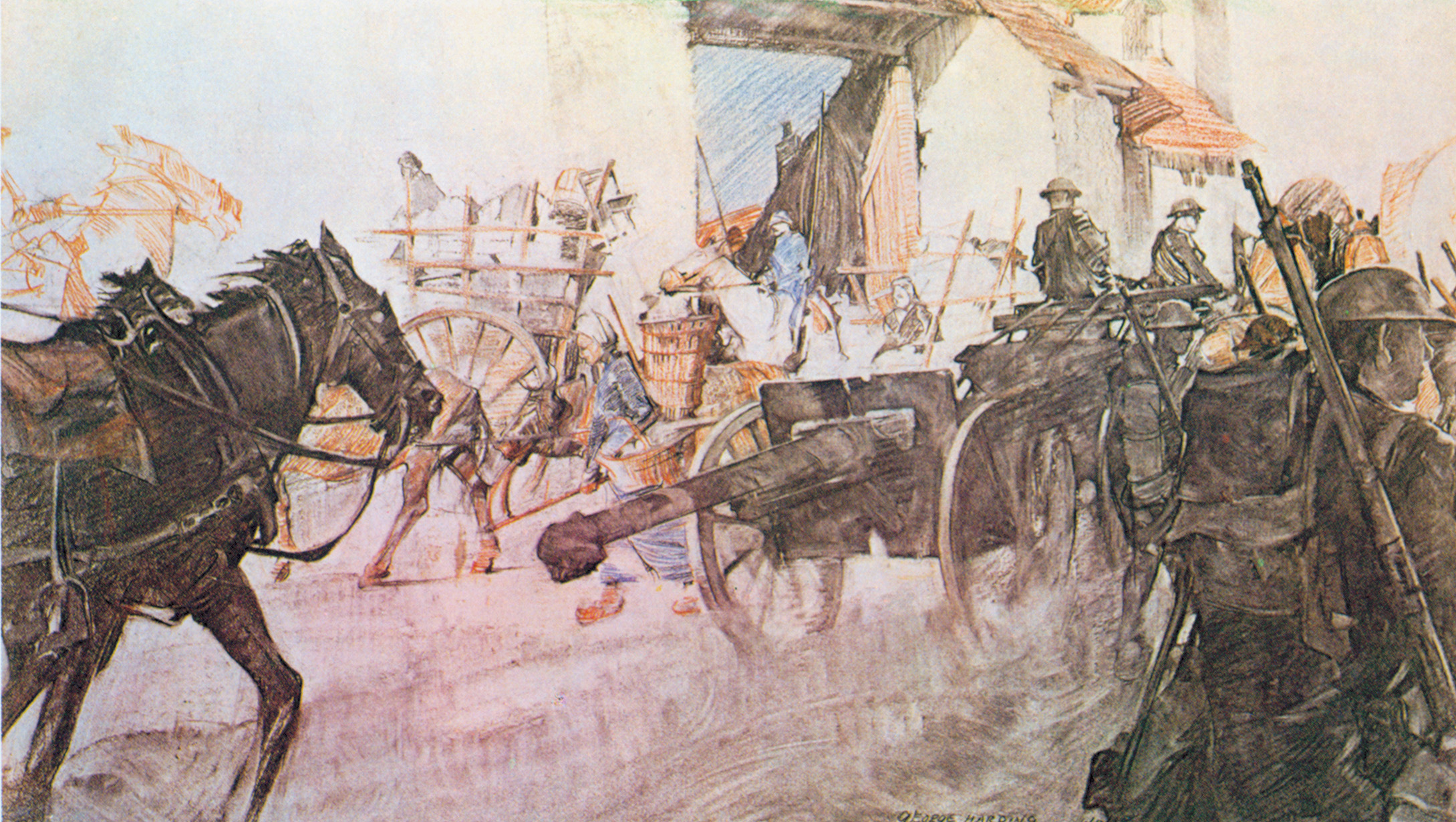
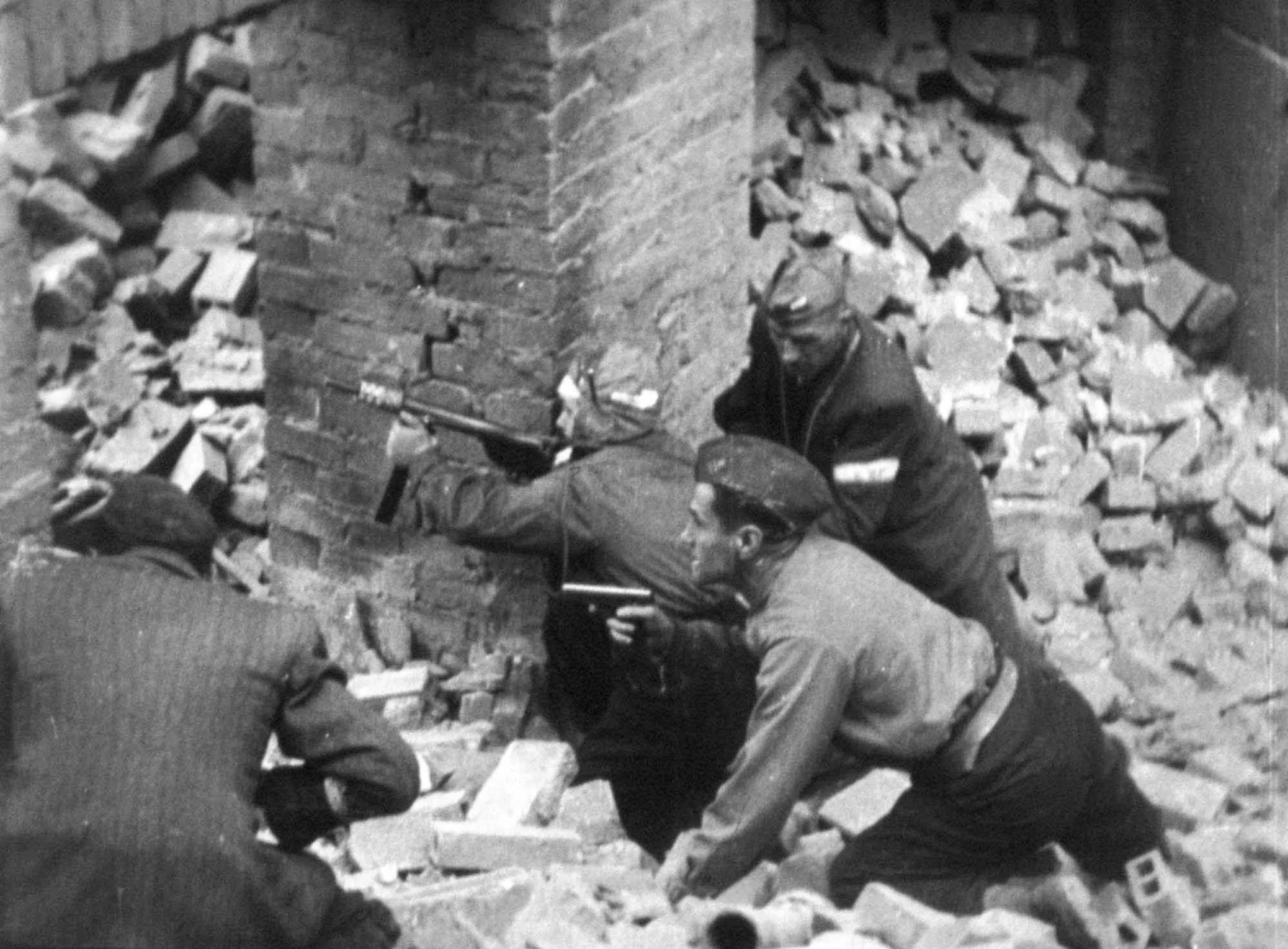
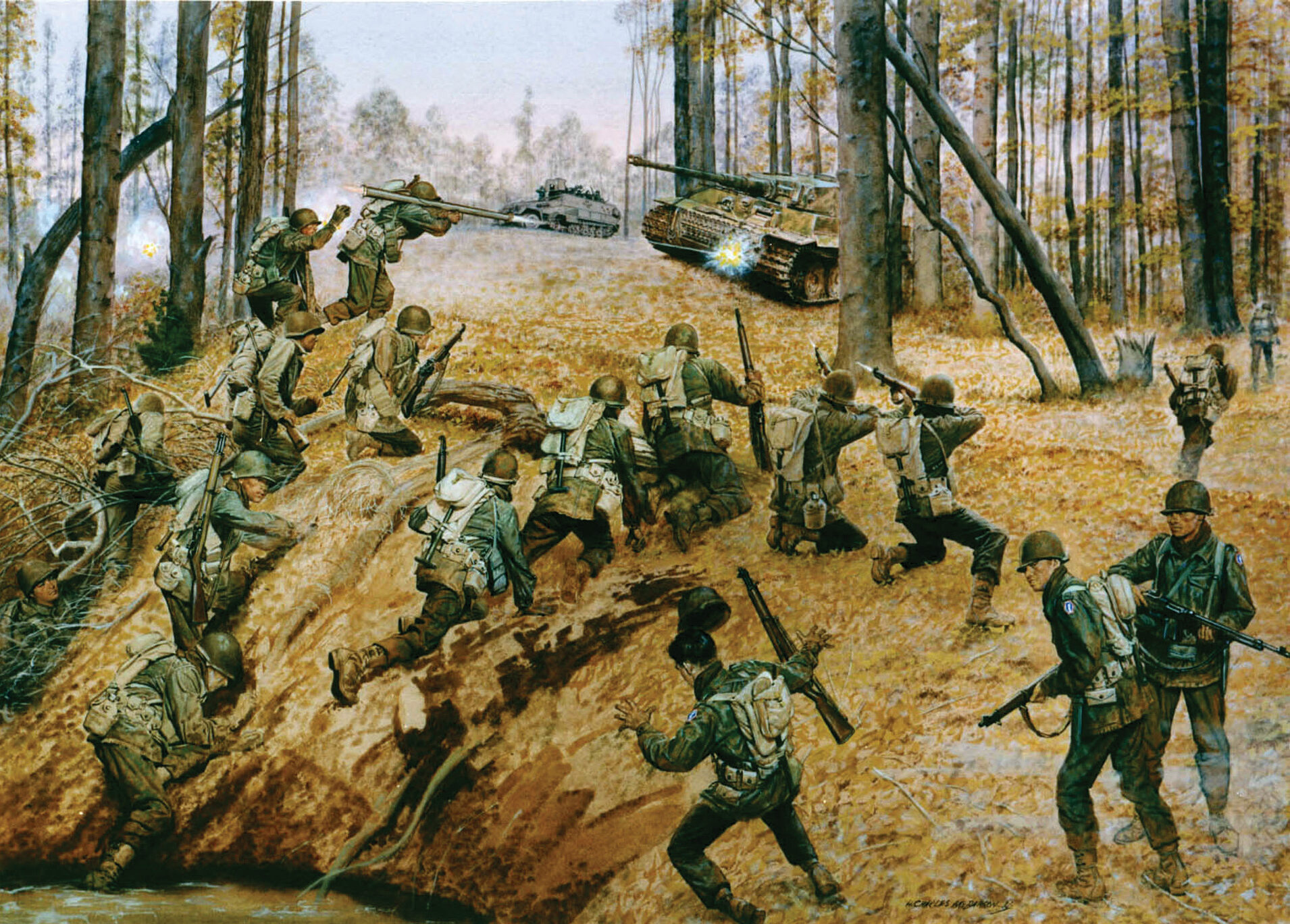
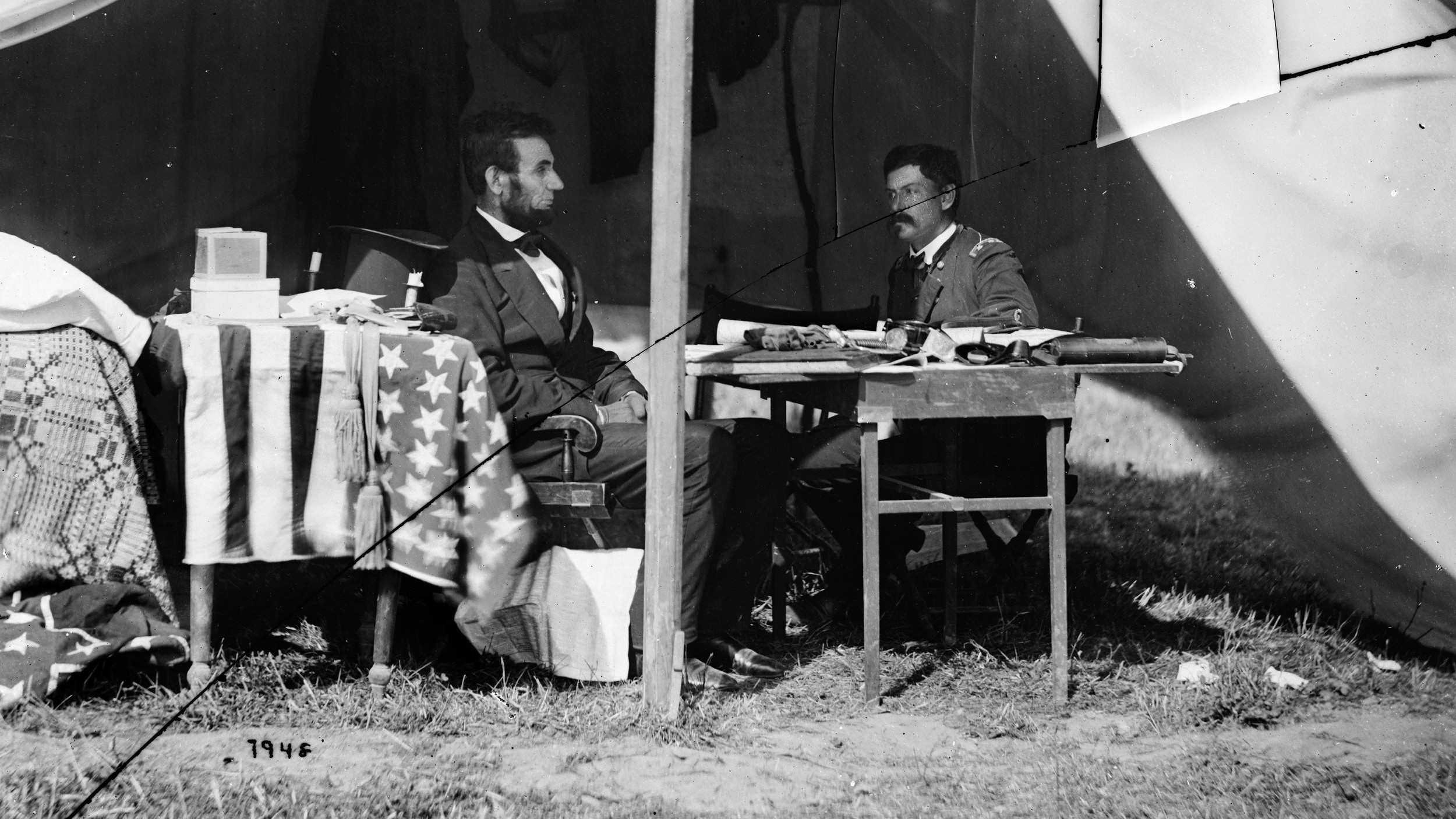
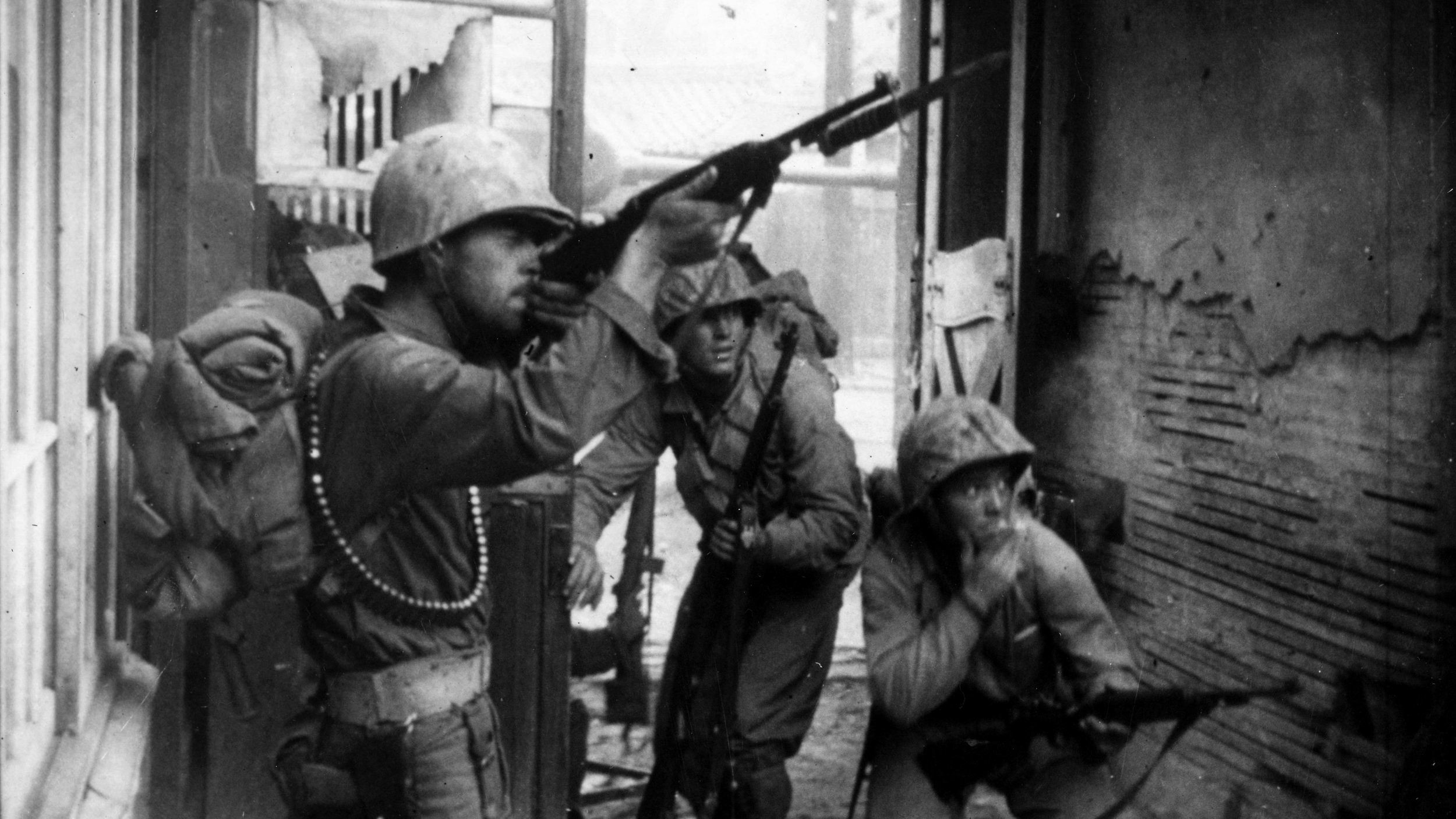
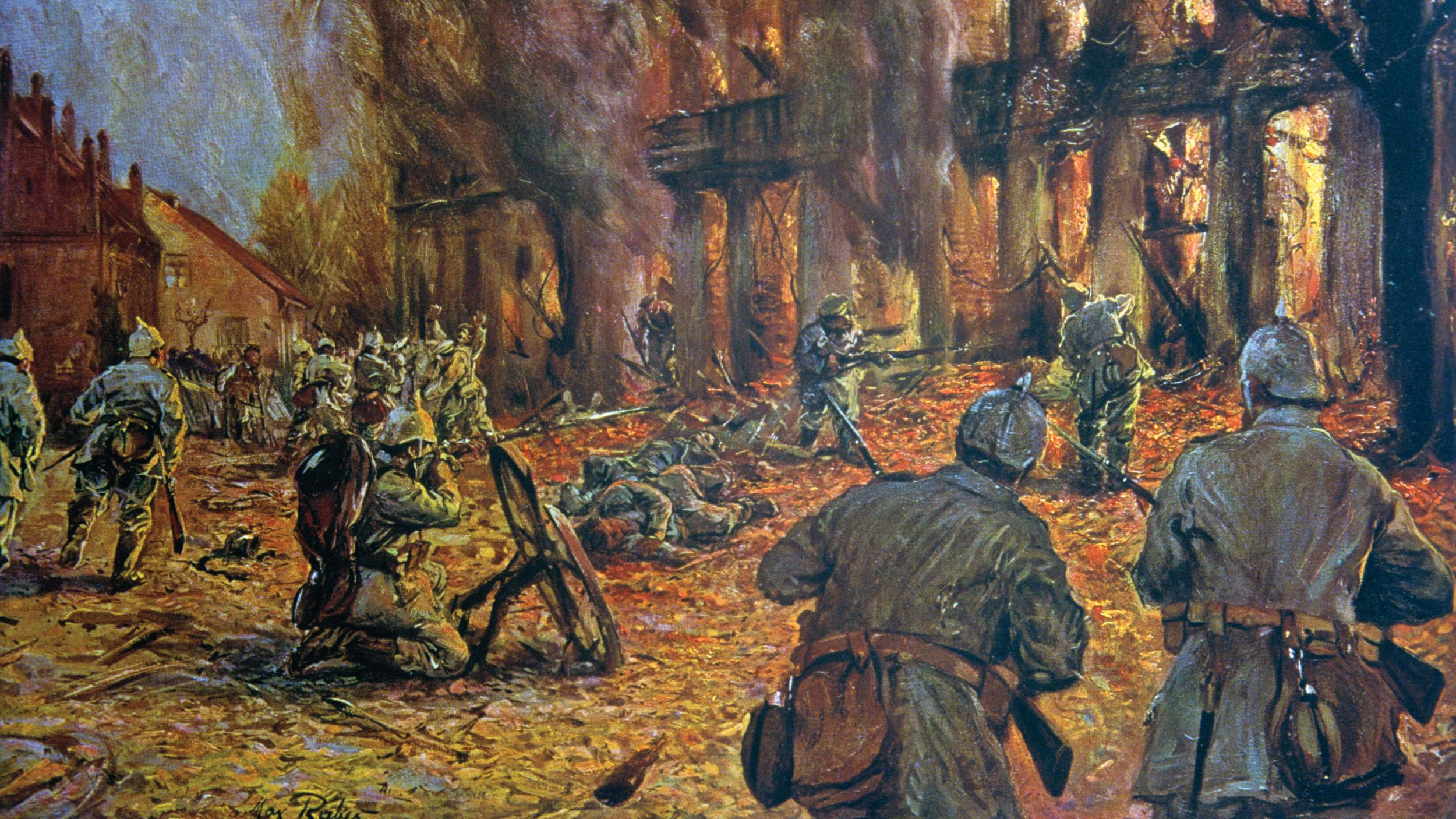
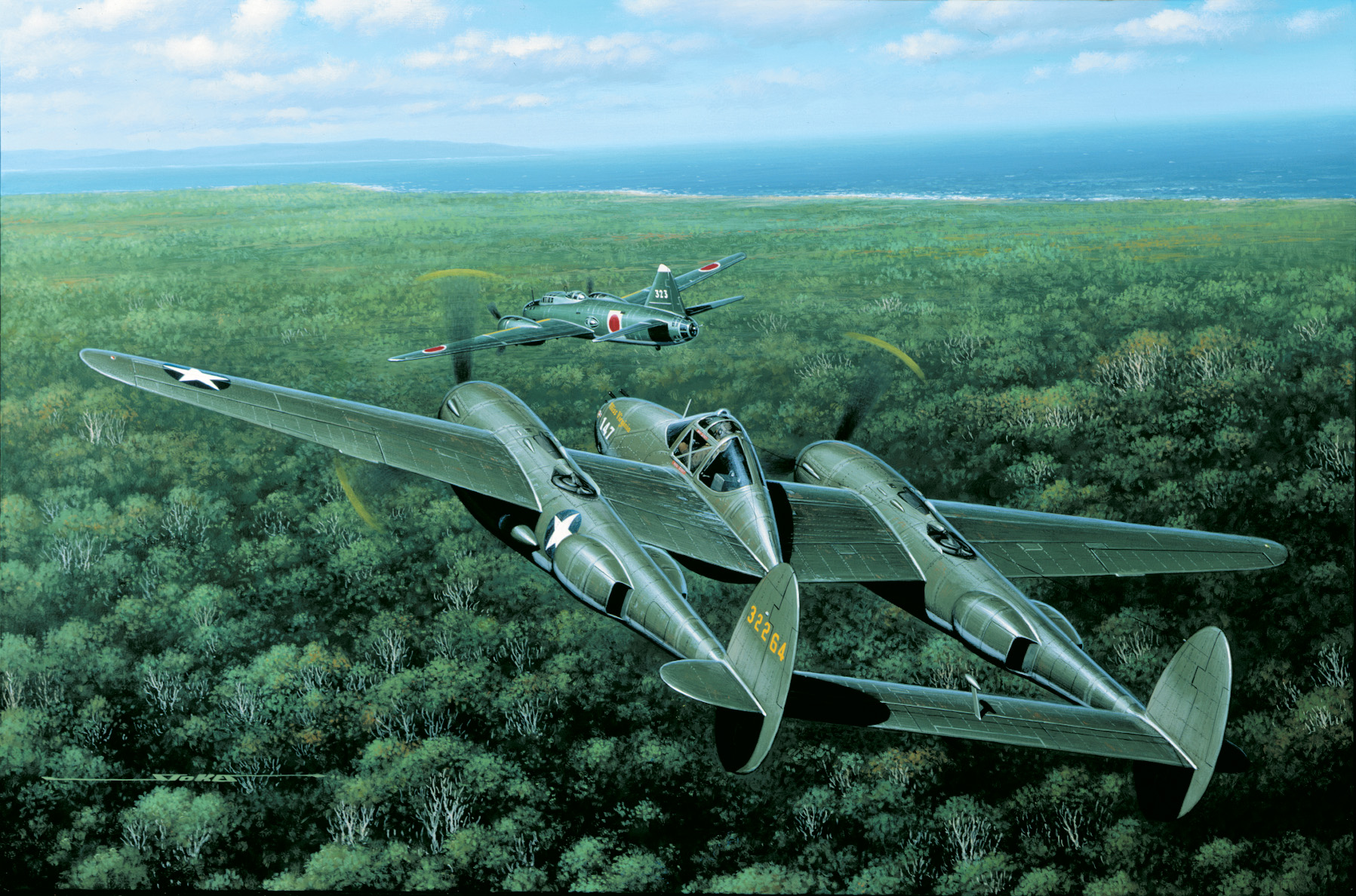
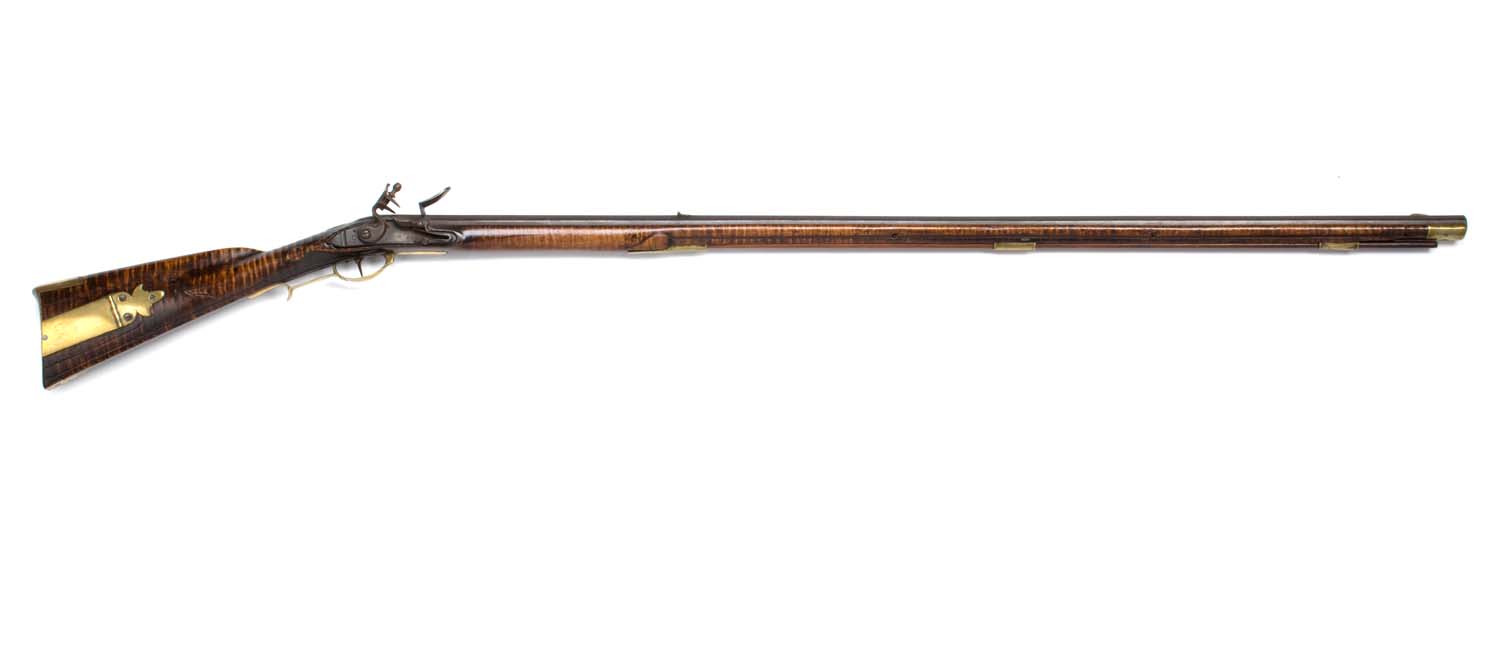
Join The Conversation
Comments
View All Comments